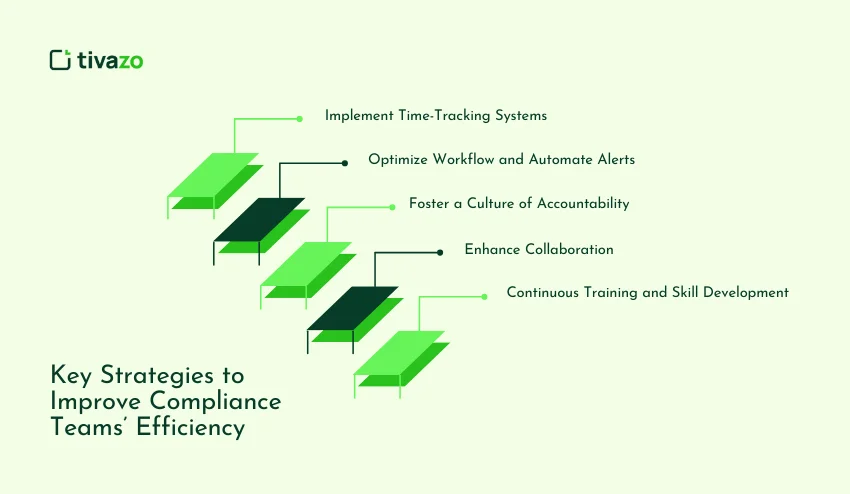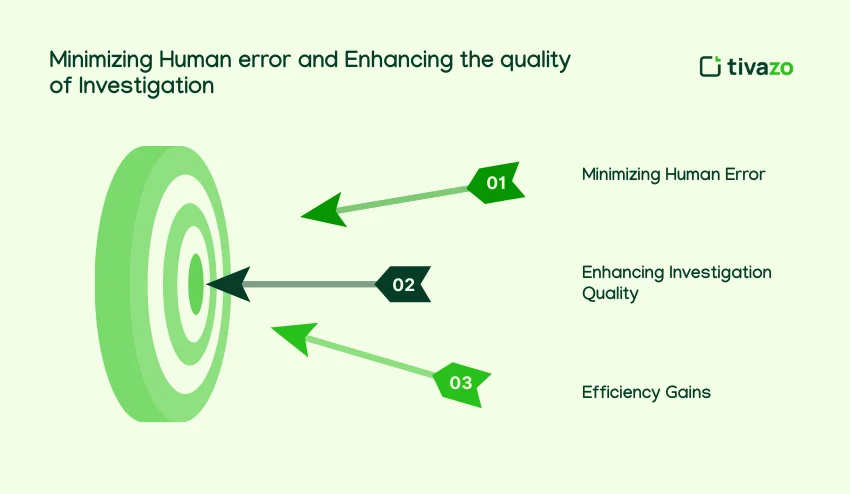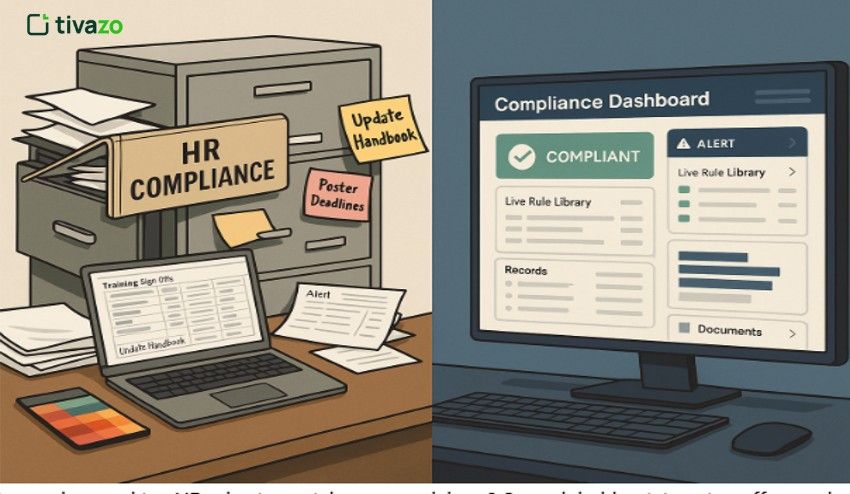One of the toughest tasks of contemporary compliance teams has been to prepare high-risk alerts. Since financial crime is becoming more advanced and regulatory demands are rising, the quantity and the complexity of notifications offered by transaction monitoring systems are constantly growing. All the alerts should be evaluated, and reported in detail and be solved within strict time frames. Time is also one of the most significant resources of compliance departments in this environment. That is why the time-tracking systems, being no longer optional, have become a fundamental requirement in the context of making sure that the AML compliance levels remain high in the environment of the rapidly evolving financial ecosystems.
Key Highlights:
- Increasing Intensity of Perilous Notifications
- Reason why Time-Tracking is a must in an effective investigation
- Using Time Visibility
- Key Strategies to Improve Compliance Teams’ Efficiency
- Minimizing Human error and Enhancing the quality of Investigation
- Distributed and Multi-office Compliance Teams
- Individual culture of AML Compliance
The Increasing Intensity of Perilous Notifications in AML Compliance
Regulatory oversight of financial institutions is growing stronger and compliance departments should not take long before they detect suspicious actions and report them. High-risk alerts tend to be irregular transaction patterns, unusual customer behavior or anomalies that are detected by automated systems. Such warnings cannot be overlooked or dealt with on a face value. They need a detailed research, extensive documentation and clear line of decision-making.
In the absence of a systematic time management strategy, the investigations are also haphazard and unpredictable. Alerts are delayed to solve, backlog becomes impossible to manage and the organization may miss out very important reporting deadlines. These difficulties lead to the necessity of time-tracking systems that establish visibility, discipline, and accountability in compliance operations.
The Reason why Time-Tracking is a must in an effective investigation
Time-tracking is an important activity in the management of the different phases of an investigation. Upon the creation of alert, analysts are expected to collect transaction histories, conduct due diligence, analyze customer profiles and evaluate risk factors. The steps can be optimized only after managers learn the duration of each step and stages that produce delays. This can be achieved through time-tracking systems which provide a good overview of the time of investigation of each alert.
Compliance teams can understand workflow patterns with an adequate time tracking. They can figure out the common delays that occur, the areas where many analysts waste their time and make rightful decisions to enhance productivity. The visibility facilitates quicker investigations and more standardized results, particularly in resolving alerts of higher risk that require urgent action.
Using Time Visibility to Reduce Alert Backlogs
The compliance teams are at a lot of risk because of alert backlogs. In the case of alerts being received at a faster rate than they are corrected, genuine dangers may escape. There is a high-risk alert, and prompt action is necessary, but, unless time-tracking is in place, managers cannot be aware of cases that are stagnating or analysts that are overwhelmed.

1. Managing Alert Backlogs:
Alert backlogs are a serious challenge for compliance teams, as they create a situation where an increasing number of alerts accumulate faster than they can be resolved. Without an effective time-tracking system in place, managers cannot easily identify which cases are stagnating or which analysts are overwhelmed. In such a scenario, important alerts might be delayed, increasing the risk of compliance violations. Time-tracking tools provide transparency into the status of each case, enabling faster action to prevent potential threats from slipping through the cracks.
2. Improved Visibility for Compliance Leaders:
Time-tracking systems give compliance leaders real-time visibility into the progress of investigations. Managers can see exactly which alerts have been open the longest and identify any potential delays in processing. By having this data readily available, managers can intervene quickly to provide additional support or resources where needed, preventing critical issues from becoming larger problems.
3. Better Workload Management and Resource Allocation:
With the accurate data provided by time-tracking systems, compliance teams can manage workloads more effectively. Managers can quickly assess which analysts are working at capacity and identify where additional resources are needed. Time-tracking ensures that the team remains focused on high-risk cases rather than becoming overwhelmed by an ever-growing backlog. By prioritizing the most urgent alerts, compliance teams can maintain control of increasing alert volumes and reduce the chances of high-risk cases being delayed or ignored.
Enhancing the performance of the Transaction Monitoring Systems
The transaction monitoring systems can be aimed at identifying abnormal or suspect patterns. Their efficiency however relies on how fast and well human review is. Even a superior monitoring system will not be effective in case analysts are overburdened or the investigation is excessively sluggish.
Time tracking systems improve the efficiency of transaction monitoring systems by balancing the number of alerts and the capacity to investigate the alert. Time insights allow managers to understand when thresholds need to be changed, when more automation is necessary, or when more training is needed in order to boost efficiency of analysts. This will make sure that all high risk alerts raised by monitoring systems get checked in time and properly.
5 Key Strategies to Improve Compliance Teams’ Efficiency in Managing AML Alerts

1. Implement Time-Tracking Systems
Time tracking tools are used to track how much time is spent in each stage of an investigation, such as creating an alert, and resolving the alert. They assist compliance managers in visualizing the workflow and finding the bottlenecks.
Monitoring time, teams also understand which processes are sluggish and where analysts wastes too much time to help managers plan the workflow and to use resources efficiently and minimize the chances of missing or late notifications. It makes sure that high-risk alerts are investigated in time and boosts accountability.
2. Optimize Workflow and Automate Alerts
Streamlining the workflow and automation of the generation of alerts implies that fewer people need to be engaged in executing the mundane tasks. This involves establishing automatic alerts of high-risk and arranging investigation steps to be easily accessed.
The time of repetition such as data entry is minimised through automation, and this enables the analysts to concentrate on more complex cases. Workflow optimization will allow the team to process more alerts in the shortest possible time and have priority cases.
3. Foster a Culture of Accountability
Accountability in a compliance team Feeling of ownership on the assigned alerts and tasks by the members with visible deadlines and performance expectations. This is facilitated by time-tracking which gives a clear record of who works on what and duration of work.
Compliance teams should be made accountable of their positions, as this will make them more focused and hard-working. Tracking time strengthens accountability, as it provides real-time performance data, and therefore managers can easily recognize those team members who require extra attention.
4. Enhance Collaboration with Real-Time Visibility
Time-tracking Software provides a real-time view of the the state of alerts to managers so they can tell where this or that investigation is and how long it has been open. It is particularly critical to distributed or remote teams.
Real-time visibility helps managers to intervene easily in case a case is stuck or when an analyst is overwhelmed. It also makes sure that the members of the team agree on priorities and deadlines management, which increases collaboration despite a remote or hybrid environment.
5. Continuous Training and Skill Development
The regular training makes compliance analysts informed about the current changes in regulations, AML techniques, and software. Time monitoring can be used to understand the areas that require further training of the analysts on the basis of their performance.
The more the analysts get exposed to new tools and information, the more they can become efficient in identifying suspicious patterns, performing due diligence, and finishing the investigations. Through time-tracking activity, managers can identify the tasks that analysts are having some problems with and offer specific training.
Achieving Regulatory Expectations by having better audit trails
Financial institutions are supposed to have clear, traceable and complete records of their compliance processes which are supposed to be maintained by the regulators. In the process of an AML audit, the investigators look at the timelines of the investigation, the accuracy of documents, and the compliance with the deadlines. In cases where a financial institution is unable to show the duration of an alert that was left open or the progress of the investigation, they can be penalized, warned or be issued with a corrective action taken.
Time-tracking creates an open timeline of every alert automatically. This timeline creates a strong audit trail that documents the date of the beginning of an investigation, the way the investigation was conducted and the end date. Existence of correct timestamps will guarantee to the auditors that the organization has its well-organized procedures in place, appropriate control, and constantly fulfills the requirements.
Minimizing Human error and Enhancing the quality of Investigation
Compliance inquiries entail massive data, records and decision-making. In the absence of time management techniques, analysts can hurry up and omit some steps, lose the information, or make predictions on deadlines inaccuracy. These inaccuracies may result in the lack of compliance.

1. Minimizing Human Error:
Time-tracking assists in establishing a steady speed of the investigators, eliminating the chance of being in a hurry and neglecting steps that require attention. The automated time records enable an investigator to work on the quality of the investigation but not the administration. The managers can easily identify variances in the time taken to conduct an investigation, a pointer of errors or inefficiencies.
2. Enhancing Investigation Quality:
Time-tracking tools allow relevant real-time information that cannot allow analysts to overlook important processes. Unremitting surveillance also serves to keep investigations on course and consistent, and the accuracy of time records can be used to optimize the process of the analysts as time goes by, increasing the overall quality.
3. Efficiency Gains:
The use of automation removes the requirement of time tracking using manual means, which lowers administrative expenses. Time tracking will give a clear picture of time distribution among the investigations, which will assist in streamlining the workflow and resource distribution.
Increasing the Analyst Productivity and Workload Management
Compliance work is not an easy one, particularly when it comes to high risk alerts that are to be analyzed in a complex manner. Analysts are overwhelmed when they have irregular or unpredictable workloads and in this case productivity and morale are compromised. Time-tracking is useful in this helping the managers understand the amount of time that each analyst takes on various alerts.
Having proper time knowledge allows the managers to balance schedules, provide more effective alerts, and understand when a particular case needs extra help. This results in healthier workloads, enhanced teamwork, and increased retention in compliance jobs that are usually high-stress and high-pressure.
Distributed and Multi-office Compliance Teams
The compliance teams in modern settings tend to operate remotely or in hybrid settings. Although this provides flexibility, this also poses difficulty in oversight. Managers have no opportunity to observe the development of investigations physically, analysts may not be able to adhere to regular habits.
Time tracking solutions fill this gap by providing access to real time visibility on a global scale. Managers can also view the alerts that are undergoing work, the time that each stage is taking and the investigations that should be addressed. This guarantees a consistent performance in all team structures without necessarily having to micromanage them.
Individual culture of AML Compliance
Time-tracking will help to develop a disciplined, accountable, and clear compliance culture. When analysts are operating under an organized time frame, they are more considerate in their investigations, and their documentation is of high quality. In turn, managers will be able to assist analysts better since they will be aware of the time requirements of different notifications.

- Promoting Discipline: Time-tracking can help analysts to operate within a time framework, where discipline and focus in investigations and quality documentation is promoted.This systematic practice makes work more comprehensive and unified.
- Improved Manager Support: Time-tracking will assist managers to know the time required to fulfill various alerts which will enable them assist analysts better.The managers are able to resource and provide guidance where necessary avoiding delays and errors.
- Nurturing Culture: Policies are not sufficient to make a strong compliance culture.Time-tracking tools maintain a focus of the investigations with the priorities of risks and legal requirements, which helps to promote consistency, precision, and accountability in the compliance process.
Conclusion
Time tracking systems have evolved to be an important element of the contemporary compliance processes. The more sophisticated and complex the high-risk alerts, the larger the transaction volumes, the more compliance teams should implement tools that will facilitate the increase of visibility, accountability, and efficiency. Good time tracking will aid in sound investigations, lessen backlogs, enhance the performance of transaction monitoring systems, enhance the documentation of all the AML audits, and will assist organizations to remain highly AML-compliant in a changing regulatory landscape.
Better time tracking is not a luxury for financial institutions that wish to safeguard themselves against risk and remain trustworthy to the regulators. It is a strategic requirement that directly determines the level of investigations and the effectiveness of the entire compliance structure.




